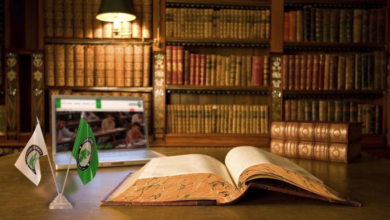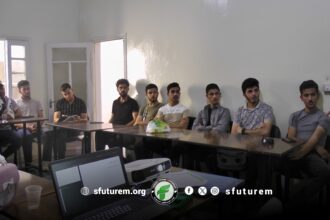Does the sun rise from China over Syria?

Introduction:
Syrian-Chinese relations were strained due to China’s conservative stance towards the Arab-Israeli conflict. However, this changed notably at the onset of the Syrian revolution in 2011, when China showed support for the Syrian regime and opposed any foreign intervention in Syrian affairs. China is one of the largest economic powers in the world, ranking second in terms of GDP and first in international trade. It also has strategic interests in the Middle East, sourcing most of its oil and gas needs from there. Furthermore, China is keen on expanding its influence and promotes the “Belt and Road” initiative, an ambitious plan to build a trade and infrastructure network linking Asia, Africa, and Europe. Syria, located in West Asia and bordered by countries like Turkey, Iraq, Jordan, Israel, and Lebanon, has substantial Chinese business investments, especially in energy, telecommunications, and construction. Before the Syrian revolution, China invested around $2.1 billion in Syria and had about 300 companies operating there. But war conditions forced it to evacuate its staff. Nonetheless, China continued to support the Syrian regime, frequently using its veto power in the UN Security Council against resolutions condemning Syria and also provided humanitarian and medical aid to Syrians in regime-controlled areas, participating in international peace talks about Syria.
Reasons for China’s stance:
China’s position on the Syrian revolution appears complex and multifaceted, influenced by various political, economic, and strategic factors. China opposes any foreign intervention in Syrian affairs, advocates for a comprehensive and objective political solution that respects Syria’s sovereignty, unity, and independence, and involves all relevant parties. It opposes any forceful regime change or division of Syria and emphasizes its role as a neutral mediator and friend to the Syrian people. China also expresses its willingness to contribute to reconstruction and development in Syria.
Some reasons shaping China’s stance against the Syrian revolution:
1. China upholds the principle of non-interference in other countries’ internal affairs, fearing it might set a bad precedent for its separatist movements or opposition.
2. China views Syria as a strategic pivot in the region and a gateway for expanding its influence and promoting the “Belt and Road” initiative.
3. China, in alliance with Russia, opposes Western dominance, aiming to counter the global influence of the USA and its allies. It also benefits from its relations with Iran, a supporter of the Syrian regime.
4. China fears rising oil prices or supply disruptions due to regional tensions, as it sources most of its oil and gas needs from the region.
5. China lacks the military capability to engage in wars beyond its borders like the USA and its allies. It prefers to focus on other pressing issues, such as trade challenges or issues in the South China Sea
Effect of the Russian and Iranian Supportive Stance:
The Russian-Chinese relations have witnessed an improvement through the signing of agreements on defense and economic levels, especially in the energy sector. This has highlighted a Russian-Chinese alliance directed against the United States, coordinating on several levels including:
1. Energy Security: Since 2018, Russia has been supplying China with 38 billion cubic meters of gas annually via pipelines from the Russian Far East. In March 2013, Russia and China agreed that Rosneft would increase its oil exports to China from 300,000 barrels per day to around 800,000 barrels. The agreement included the Chinese National Petroleum Company’s participation in developing three offshore fields in the Barents Sea and eight oil fields in East Siberia. China aims to secure supplies that do not pass through the Strait of Malacca, as around 80% of China’s oil imports pass through this strait. This is a strategic vulnerability for China due to the US presence across global sea routes. China recognizes that blockading or besieging the strait will disrupt its supply needs. Therefore, China seeks alternative sources that do not pass through maritime routes and sees Russia as the supplier that will provide energy supplies overland, allowing it to bypass any potential maritime blockade.
2. Arms Supply: Russia has been China’s primary arms supplier since Western countries imposed an arms sales ban to China in 1989. The sales include advanced aircraft, submarines, destroyers, ground-to-air missiles, anti-ship missiles, military technology transfer, and joint production of some of these weapons.
3. Strategic Objectives: One of China’s main strategic goals is to establish a multi-polar global economic and political system and gradually move away from the current system. This is evident through the cooperation of the two countries at international and regional institutions. The two countries coordinate their efforts within the BRICS group. In an Asian context, China established the “Shanghai Cooperation Organization” to provide a mechanism for joint cooperation between Russia and China (and the other member states of this organization) in Central Asia. China, in cooperation with Russia, is active within the “Conference on Interaction and Confidence-Building Measures in Asia” (CICA), aiming to build a continental security system to counter American and Japanese alliances in Asia.
As for Chinese-Iranian relations, China is concerned about Iran’s regional status if the Assad regime falls. Iran occupies a central position in China’s priority ladder, due to the combination of geopolitics and securing energy imports. The latter has been at the top of China’s national security priorities since 1993. Additionally, Iran is a massive energy producer and a vast market for Chinese products.
“It can be said that today, Iran is the only true ally of China in the region. The rest of the countries in the area are in one way or another linked to American interests. Iran is considered a potential naval base in the Arabian Gulf for the vast Chinese fleet. This hypothesis is strengthened by noting the geographical proximity advantage of China – compared to America, for example – from the geographical arc containing about 71% of global oil reserves and about 69% of natural gas reserves. This arc includes Russia, Central Asia, Iran, Iraq, Saudi Arabia, and the Arab Gulf countries. This geographical proximity allows China to outpace Washington in the future race for energy resources, provided it has a foothold, which Iran offers with its geographical location at the heart of the aforementioned arc. Therefore, the fields of southern Iran overlooking the Arabian Gulf will secure a significant portion of the Middle East’s oil, while northern Iran provides an excellent view of the energy-rich Caspian Sea. Additionally, China and Iran are jointly involved in the strategy to revive the Silk Road.
On the other hand, Iran’s status is strengthened in China’s global strategy, making China the potential international cover for Iran in the Security Council since the intensification of the nuclear crisis (through mutual existential interest), which was accompanied by the signing of massive energy deals between Beijing and Tehran.
A comprehensive, non-democratic system that doesn’t support revolutions:
The comprehensive thought plays a significant role in guiding foreign policies of nations, especially evident in the bilateral relations between China and Syria since 1956. It can be said that this is a relationship based on the product of a strong intellectual linkage based on comprehensive politics, the rejection of Western democratic ideas — even though China managed to combine aggressive capitalism with authoritative comprehensiveness, making it a unique global system unparalleled in the world. As for the situation in Syria, the Assad regime formed a kind of hybrid and incomplete comprehensive system, causing a structural flaw in Syrian society. This flaw largely paved the way for the people’s uprising and their revolution in 2011, drawing ideological and structural lines of convergence between the two ruling comprehensive parties in China, the “Chinese Communist Party”, and Syria, the “Arab Socialist Ba’ath Party”
Assad’s regions join the Chinese “Belt and Road” initiative:
Some believe that Bashar al-Assad’s 2002 proposal, which he termed the “Five Seas Project,” aligns with the idea of the “New Silk Road” project launched by China in 2013. This initiative was deemed unrealistic and impossible by American circles due to its historical fantasy nature. However, Syria joined the Chinese “Belt and Road” initiative in January 2022. Syria is considered the endpoint of the Silk Road in Asia and the starting point towards Europe and Africa.
According to the memorandum, this step will aid Syria in opening up vast horizons of cooperation with the People’s Republic of China in various areas, including the exchange of goods and technology, capital flows, invigorating people movement, and cultural exchange in Syria. As cities like Aleppo and Palmyra were part of the ancient Silk Road, modern Syria represents a passageway to the Mediterranean Sea, bypassing the Suez Canal, and reviving the old trade routes connecting China with the African and European continents. Therefore, the Syrian regime is keen to integrate the coast of Tartus and the capital, Damascus, into the “Belt and Road” initiative, linking it to bolstering Beijing’s economic position in the Levant and the Mediterranean.
The magnitude of China’s role in Syria:
China’s strategy in Syria aims to transition from geo-economics to geopolitics. Understanding the duality of strategic powers affecting the world, with China as a rising power and the United States as a dominant force, doesn’t fulfill China’s hoped-for role. Chinese policymakers realize that American presence in the region, and especially in Syria, will obstruct the implementation of their plans and interests. This makes the success of Chinese projects contingent upon the strength and nature of its alliances.
China’s Path through Syria – Where To?”
Bashar al-Assad’s visit to China on Thursday, 21-9-2023, makes the picture clearer. China aims to establish a solid footing in Syria, capitalizing on the current Syrian regime’s weaknesses and degradation on one hand, and pushing it to cover the bill of China’s unlimited support, repeatedly using their veto power (in favor of the Assad regime).
Furthermore, it seems China has found an opportunity to fill Russia’s vacuum in Syria, which is mired in the Ukrainian quagmire, enabling it to pave the way for the Chinese initiative “Belt and Road” as it sees fit, especially after the unveiling of the India route, which is seen as a threat to China’s Silk Road “Belt and Road”.
Conclusion:
The Chinese decision-maker must have a clear understanding of the Syrian file and know the strengths and weaknesses of the remaining cards in the Syrian regime’s hands. If he succeeds in exploiting the regime’s weaknesses to forward his project and can connect the regime’s carriage to his transcontinental train, it may be Assad’s last lifeline and his salvation gate.
This became evident through China’s pressure to postpone the Arab League initiative until after Bashar al-Assad’s visit, building on that momentum. China can also, through its relations with Turkey which refuses to exclude China from the India-Europe route, capitalize on Turkey’s confusion in the Syrian file, by ensuring the regime and fostering normalization between it and Turkey.
This leaves us anticipating two things:
1. The continued U.S. stance of just managing the Syrian crisis without decisive action, in an attempt to scatter the Iranian and Russian powers and weaken them.
2. China’s definition of the framework between the Syrian regime and the opposition, especially with the presence of a northern Syria outside the regime’s control, inhabited by all the military factions “enemies of Assad” that have already grown restless under Turkish control. Plus, considering the “Sweidaa” demonstrations that have strained ties between the Assad regime and its minority allies, an explosion is expected at any moment on the Syrian coast.
As we in the Syrian Future Movement observe and anticipate Bashar al-Assad’s visit to China, we consider the possibility of the Chinese mindset succeeding in breaking the Syrian stalemate after the recent developments on the ground. By convincing the Syrian regime of the need to create a Syrian consensus, making all of Syria benefit from the “Belt and Road” initiative if it succeeds. In return for supporting the Assad regime’s governmental and administrative recovery through Chinese experts, especially given the similarities in thinking between the two regimes, and promising to contribute to the reconstruction of what the war has destroyed over a decade.
In the Future Syrian Movement, based on the outcomes of Bashar al-Assad’s visit to China (today), we advise the Syrian opposition to reassess its stance regarding its institutions’ relationship with China, and to attempt to open direct communication channels with it. The Syrian opposition should present an ambitious project that surpasses the current regime (which might squander the opportunity with the Chinese due to its stubbornness and narrow-mindedness). This lays the foundation for a post-Assad phase, serving both our national and public interests.
Our experiences throughout the years of war taught us not to rely on assumptions, but to prepare for and assess potential outcomes. Given everything mentioned, could the Chinese role be a decisive or aiding factor in transitioning to a new Syrian phase? This is based on our concept in the Future Syrian Movement, advocating for a potential “Syrian Sectarian” model, akin to the Lebanese model (but in a revised and enhanced version). This would make Syria a safe passage where the current interests of Syrians, even if only partially, intersect with China’s strategic interests.
In other words, could the sun rise from China upon Syria?”






